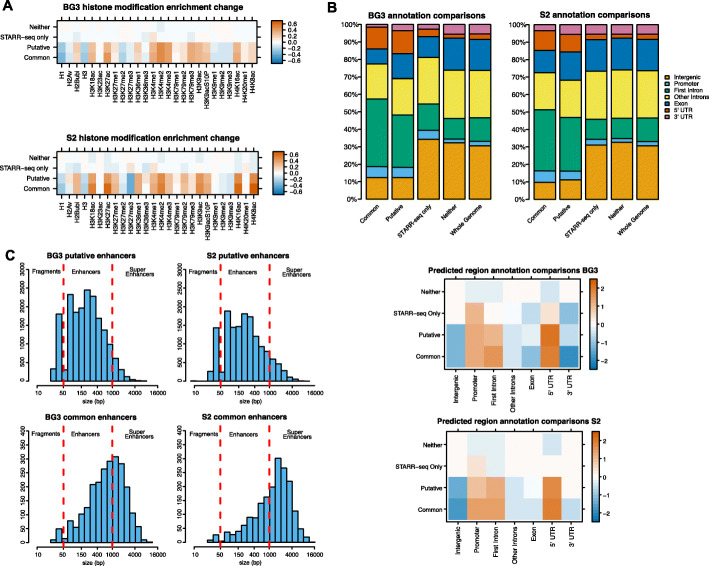Fig. 2.
Characterisation of the putative explainable AI predicted enhancers. A log2(observed/expected) histone modification signal for different groups of regions: (i) enhancers detected by both STARR-seq and XAI (common enhancers), (ii) enhancers detected by XAI only (putative enhancers), (iii) enhancers detected by STARR-seq only, and (iv) regions detected by neither. Observed and expected values were computed using average normalised ChIP enrichment scores. B Top: Overlap between different groups of enhancers (see A) and genomic features: intergenic, promoter, first intron, other introns, exons, 5′UTR, and 3′UTR. Bottom: log2(observed/expected) overlaps based on whole genome distribution of the different annotations. C Histograms containing the size distribution for putative enhancers predicted by the XAI method in BG3 and S2 cells. Predicted enhancers shorter than 50 bp are considered fragments while regions above 1 kb are classed as super-enhancers

